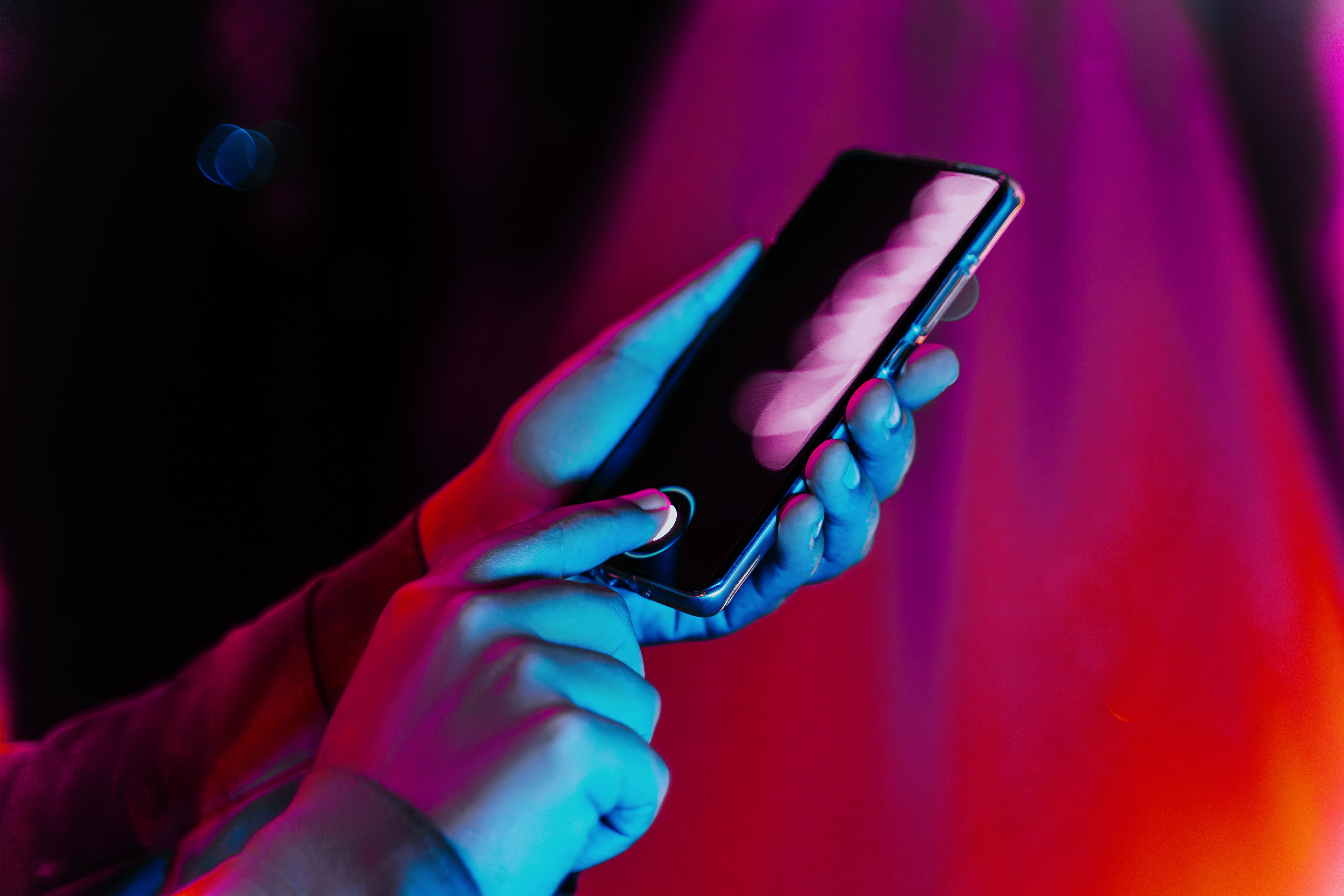Mara Johnson-Groh, 33, a freelance science writer in British Columbia, Canada, lost her fingerprints about a decade ago when she started rock climbing—particularly her middle and ring fingers, where a lot of pressure is exerted on the rock.
She says she regularly hears stories of fellow climbers having problems trying to use their fingerprints to log in to phones and computers. (She uses her thumb, which is usually pretty intact.) But it became an issue for her when she applied for citizenship, and the first stage involved getting fingerprinted.
“I went to the local police station, and they fingerprinted me and were like, ‘I don’t think this is going to work,’ because the print wasn’t good enough,” she says. The police asked her to come back a couple of weeks later, and she made it through. “They didn’t know what they were going to do if it didn’t work a second time.”
Fingerprints are becoming a ubiquitous entry device—used for background checks, travel security, and to open car doors without keys. But this unique identifier made of ridges and furrows can fade or temporarily wear down—and an increasing number of people are finding out just how easy it is to lose their fingerprints, often with maddening consequences.
It’s natural to lose our fingerprints as we age, as the skin on the hands thins and the loops, whorls, and arches degenerate and even out, says dermatologist Roger N. Haber, an assistant professor of dermatology at the University of Illinois College of Medicine in Chicago, who studies fingerprint loss. But for people of all ages, modern life also features an increasing amount of what Haber calls “microtrauma”—repeated wear on the fingertips, which possibly contributes to an increased loss of fingerprints, although this has never been formally studied, he says.
That microtrauma could include gaming or typing, due to repeated pressure on the same area of the hands, but Haber says the real issue is irritant dermatitis, caused by chemicals in plastics and substances that we frequently touch. People working in health care fields, who do a lot of handwashing and use a lot of soap and chemicals, often have fingerprint problems.
Typically fingerprints return in a matter of months, but if the problem isn’t addressed, loss of fingerprints can be a long-term issue, Haber says. “It’s an underdiagnosed condition,” Haber says.
More and more people are sharing stories of being unable to access their phone or get through a security check—such as NPR host Scott Simon or piano teacher Karla Akins—but it’s unclear just how much people’s hands are changing or if the public is simply noticing something that has long gone unnoticed because fingerprints have replaced keys and passwords.
“That’s a good question. I really don’t know the answer,” says Glenn Langenburg, a forensic scientist who worked on crime scenes for eight years at the Minnesota Bureau of Criminal Apprehension. There’s also a third factor, he adds: Sometimes problems result from issues with the fingerprint-reading device and not your fingertips.
Fingerprints have been used as signatures dating back centuries, explains Simon A. Cole, a professor at UC Irvine, who wrote about the discovery of fingerprints as a unique identifier in his 2002 book Suspect Identities. The English started using fingerprints on contracts in India in the 19th century, and police at Scotland Yard in London started using them to identify criminals in 1901. In 1902, the New York City Civil Service Commission began using fingerprints to identify applicants for civil service jobs.
Cole says there was a kind of idealism in the early 20th century that increased use of biometrics, and especially fingerprints, would usher in a better society. That there would be less fraud, and people would feel more comfortable with financial transactions and trust each other more, because everyone’s fingerprint would be on file with the government. “In the 1930s and 1940s, the Boy Scouts would go out and, as a civic duty, just collect people’s fingerprints on the street,” he says.
Coltyn Stone-Lamontagne, 23, is a computer science student in Manitoba, Canada, and has paid for his tuition for the past six years by spending summers planting trees to replace those destroyed by forest fires or cut down by the timber industry—planting about 3,000 of them a day.
“You walk forward, you swing down to put the shovel in the ground, you pull back, and put the tree in and close it as quick as you can, either by kicking in or pushing in the dirt,” says Stone-Lamontagne. “You have to go as fast as you can, because you make more money the more trees you plant.”
He wears gloves, but dirt and grit get inside them. In the process of throwing in his spade thousands of times and grabbing thousands of trees, he says he can feel sand and dirt rub against his fingers. Last year was the first time he really noticed the wearing effect on his hands, because he had a fingerprint lock on his phone.
“I didn’t realize it was happening, and then I went to unlock my phone, and the phone ignored it and ignored it, and I thought that was weird, maybe I had a cut or something. So I tried my other thumb, and that didn’t work either,” he says. He used his password to go into the settings and try to re-add his thumbprint. “It wouldn’t even read it—it just didn’t see a thumbprint at all. I had to use the very edge of my thumb for it to even see anything.”
Because the template for fingerprints is built into our skin cells, fingerprint issues are usually temporary. The body replenishes the cells of the skin continuously through mitosis, dividing cells to create new ones and so sending up layer after layer of new skin cells to the surface over time. This process naturally replaces the outer layer of the skin every 30 days or so.
Stone-Lamontagne says that once the planting season is over, it takes a couple of months for his fingerprints to come back. This year, he turned off the fingerprint setting as well as the password, just for convenience.
Terri Krejci, 60, from Huntsville, Alabama, was working as an overnight manager at CVS in 2014 when she discovered she had breast cancer. She had six months of chemo, then surgery. Her medical team warned her that she might lose her hair, that she would get nauseous. She had no idea she could lose her fingerprints.
“It was just after my second round of chemo, and I had a Samsung phone that had a touch ID, and it kept saying ‘fingerprint not detected,’” says Krejci, who is now retired. “Then one of the nurses said, ‘Oh yeah, I guess we forgot to tell you about that. That’s gonna happen.’ They said it could be quite a while before I would see those fingerprints come back again.”
This caused a particular problem—as Krejci needed to use fingerprint ID to get into the cancer unit. Someone had to let her into the center each time, until they finally gave up and gave her the code. Ten years later, her hands are mostly back to normal, she says, but she still has to reset the fingerprint scan on her phone regularly.
Langenburg, the forensic scientist, says issues with fingerprints aren’t going to go away any time soon. He predicts the trend will be to use multiple biometric factors to compensate for potential fingerprint issues—a retinal scan or face ID and a fingerprint, for example.
He says that for people who know they have fingerprint issues—construction workers, rock climbers—there are ways to make your hands easier to read. Make sure to hydrate, and use sanitizer gel or hand lotion right before scanning. In Minnesota and Wisconsin, professionals tasked with taking fingerprints use “udder balm,” typically used on cows, because it makes the fingers a little sticky, and that helps with fingerprint recording.
Of course, there are some people who want their fingerprints to be obscured—particularly criminals. “They often will pay large sums of money to try to obfuscate their fingerprints through acid or surgery or whatever,” says Thomas Busey, a professor of psychological and brain sciences at Indiana University, who studies the use of fingerprints and accuracy of fingerprint analysis.
But Langenburg says that going through those extensive procedures often has the opposite effect to what’s desired, creating a more unique mark. He points to the American gangster John Dillinger, who cut his fingers and then poured acid into them, which scarred the middles of his fingers but left all the tips, joints, and sides all identifiable. “As soon as we see those kinds of red flags, we immediately know this person’s trying to hide their identity. It’s such a nonsense thing that’s been going on for 100 years, and it does not work,” Langenburg says.
Busey believes thinks that it’s odd that we’ve ended up focusing on using fingerprints for biometric identification. A criminal fingerprinting usually involves recording all 10 fingers as well as the palms, capturing a vast amount of detail, whereas something like a phone or computer or airport scanner may use only a single finger, or just an area on that finger. It’s a very limited identifier if something goes wrong—and also something that gets around.
“You probably have a password for your computer, and you probably don’t get into the habit of sharing your password with other people,” Busey says. “But when your fingerprint is your password, you’re literally leaving your password on every object you touch.”










